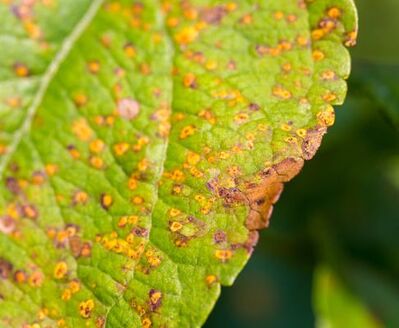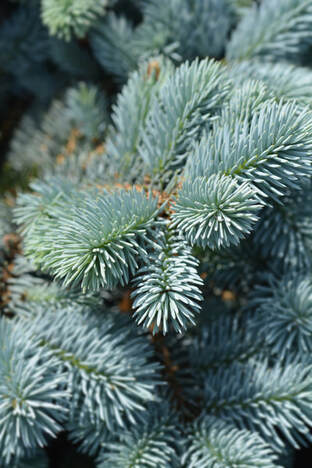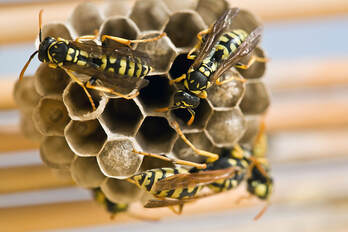|
12/16/2020 How To Treat Anthracnose Disease You may know it as twig blight or shoot. It affects a host of trees, shrubs, and other plants. Fighting an anthracnose disease can be a harrowing process, leaving homeowners asking, "How do you treat anthracnose successfully?" Realizing which plants get anthracnose and how to stop it could go a long way in efficient anthracnose control. Anthracnose Disease Information Anthracnose is a disease that tends to attack the leaves of plants in the springtime when the temperature is cool. Rainy, cold weather makes the ideal conditions for the spores to spread. Hot and dry weather halt the spread of the disease that might start again once the weather conditions become most favorable. The issue could be recurring but is hardly deadly. The sunken, dark lesions might appear on fruits, stems, and flowers. To differentiate between anthracnose and other diseases, you must inspect underneath the leaves for several brown dots around the size of a pinhead. If you aren't sure how to diagnose anthracnose disease, consult a tree care professional. Plants That Get Anthracnose A host of plants may be affected by anthracnose fungi, such as those grown outside of a greenhouse, like tropical plants and woody ornamentals. Potted plants and greenhouse crops, including palms, cyclamen, yuccas, lupine, and succulents, are affected. Trees that are susceptible to anthracnose include sycamore, walnut, maple, oak, camellia, ash, and azalea. Treating Anthracnose Anthracnose disease control starts with performing good sanitation. Get rid of all diseased plant parts, including leaves and branches, from the ground around the plant. This task stops the fungus from spreading close to the plant. Correct pruning methods to eliminate plants of dead wood also aids with stopping anthracnose fungus. Keep your plants healthy by giving the right amount of fertilizer, water, and light, strengthening the plant's ability to fight fungus attacks. Stressed plants have a hard time recuperating from anthracnose fungus. Chemical treatments aren't used except when the disease affects freshly transplanted plants or frequent defoliation. Reach out to us at Rochester Stump Removal and speak to one of our tree experts to learn more about anthracnose disease. 11/18/2020 Common Blue Spruce Diseases Colorado Blue Spruce Colorado Blue Spruce Because of its fantastic, blue-silver foliage and generous growth rate, the Colorado blue spruce tree is broadly planted throughout the U.S. This famous tree is the ideal tree for significant landscapes. Frequently, blue spruce trees become infested with tree fungal infections that affect their growth. Also, blue spruce diseases encourage damage from pests. Blue Spruce Diseases and Their Symptoms Common blue tree diseases include needle cast and canker fungus. Needle cast is a transferrable needle disease due to a fungus. Canker fungus is a disease that infects tree limbs. Symptoms of needle cast diseases are dead limbs and discolored needles. Generally, your tree looks like it's dying from the bottom upward. Diagnosing needle cast disease is done by examining the faded needles with a magnifying glass. Blue spruce trees affected with canker fungus frequently have sunken spots along a stem that might ooze resin. If you study the tree, you might also see folds of injured tissue around older canker infections. As the canker fungus spreads, it hinders the tree's capacity to transfer nutrients, resulting in dead limbs. How to Manage Tree Fungal Infections To effectively manage needle cast diseases, get rid of fallen needles and dead limbs beneath the tree to halt further infections. Also, you can spray diseased blue spruce trees with a fungicide. An insecticide application stops new viruses and safeguards new growth. It would be best if you used fungicides when the new needles extend halfway, usually in April or May. There is no cure for canker fungus. Therefore, fungicide treatments won't work. The most efficient approach is to sustain the health of your trees. Affected limbs must be trimmed in the cold months when the tree is dormant. Pruning is the primary technique of treating trees displaying signs of canker fungus. Best Disease Control Techniques As with diseases, the best control for blue spruce diseases is prevention. It's vital to know how to best maintain your tree, in terms of water, soil, and pruning obligations to successfully stop Colorado spruce issues. Soil should be fertile and well-drained. It's critical to keep the soil moist when the tree is young. Your tree must have sufficient water at all times, especially during a drought. To sustain moisture and soil quality, you can apply a mulch layer around the bottom of your tree. For more information on blue spruce diseases, contact Rochester Stump Removal.  Yellow jackets are social wasp species famous for delivering painful stings when agitated. These pests prey on other insects. Usually, a yellow jacket nest is in a tree in the ground cavities. It isn't unusual to see a yellow jacket nest concealed near the roots of a grouping tree growing in your outdoor space. Identifying a Yellow Jacket Nest in Your Tree Yellow jackets are around the size of a fly, possessing black and yellow markings. These bugs are frequently mistaken for honeybees. However, yellow jackets are stocky and little instead of round. Several types of yellow jackets choose to build their nests near tree roots. It is vital to know that these bugs actively protect these nests when bothered. Benefits Yellow jackets are carnivorous predators that slaughter huge numbers of flies that usually bother veggie gardens and fruit trees. Adult yellow jackets attack bugs like moths, slugs, worms, caterpillars, and spiders. The preying endeavor can vastly decrease the number of bugs that could be feeding on your garden and landscape plants. Drawbacks There are drawbacks to having a yellow jacket nest in your tree. You or a loved one can become ill from a wasp sting allergy. These bugs are very protective of their nests. The vibrations from walking can get the young and queens mad and stinging. Yellow jackets get highly aggressive as their colonies increase. Therefore, most gardeners have issues with these pests when the colony peaks in autumn or summer. Stinging usually happens at the nesting site. Yellow jackets sting folks who try to slap them away from food sources like bird feeders, pet dishes, and trash cans. Management Since yellow jackets don't damage the tree itself. People, therefore, don't bother the nests, letting the yellow jackets diminish the population of harmful insects hanging around your landscape. If you need to eliminate yellow jackets, tree and stump removal professionals suggest using a pesticide spray to rid your outdoor space of hornets and wasps. Buy a product that sprays around 20 feet away. This way, you are at a safe distance while spraying right into the nest opening. Read and adhere to the directions carefully. Look at the nest the next day. If needed, reapply the insecticide. Call Rochester Stump for more information on yellow jacket nests in trees. |
AuthorWrite something about yourself. No need to be fancy, just an overview. Archives
December 2020
CategoriesAll Insects & Diseases Questions & Answers Tools & Safety Trees & Landscaping Tree Stump Basics |
- Home
- Services
- About
- Contact
-
Service Areas
- Rochester NY Stump Removal
- Brighton Stump Removal
- Chili Stump Removal
- Churchville Stump Removal
- East Stump Removal
- Fairport Stump Removal
- Farmington Stump Removal
- Gates Stump Removal
- Greece Stump Removal
- Henrietta Stump Removal
- Irondequoit Stump Removal
- North Gates Stump Removal
- Parma Stump Removal
- Penfield Stump Removal
- Perinton Stump Removal
- Pittsford Stump Removal
- Victor Stump Removal
- Webster Stump Removal
- Blog
- Home
- Services
- About
- Contact
-
Service Areas
- Rochester NY Stump Removal
- Brighton Stump Removal
- Chili Stump Removal
- Churchville Stump Removal
- East Stump Removal
- Fairport Stump Removal
- Farmington Stump Removal
- Gates Stump Removal
- Greece Stump Removal
- Henrietta Stump Removal
- Irondequoit Stump Removal
- North Gates Stump Removal
- Parma Stump Removal
- Penfield Stump Removal
- Perinton Stump Removal
- Pittsford Stump Removal
- Victor Stump Removal
- Webster Stump Removal
- Blog
Search by typing & pressing enter

 RSS Feed
RSS Feed